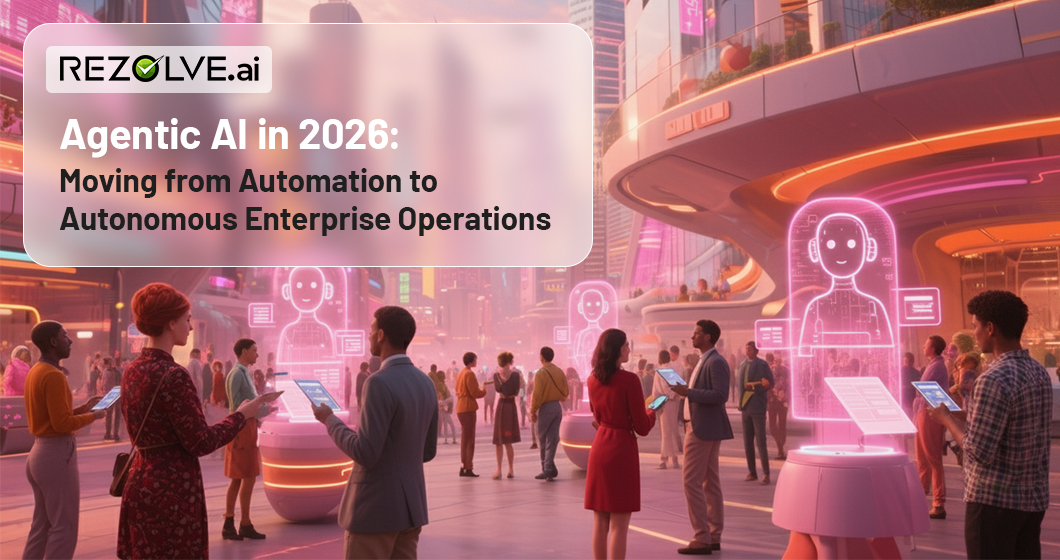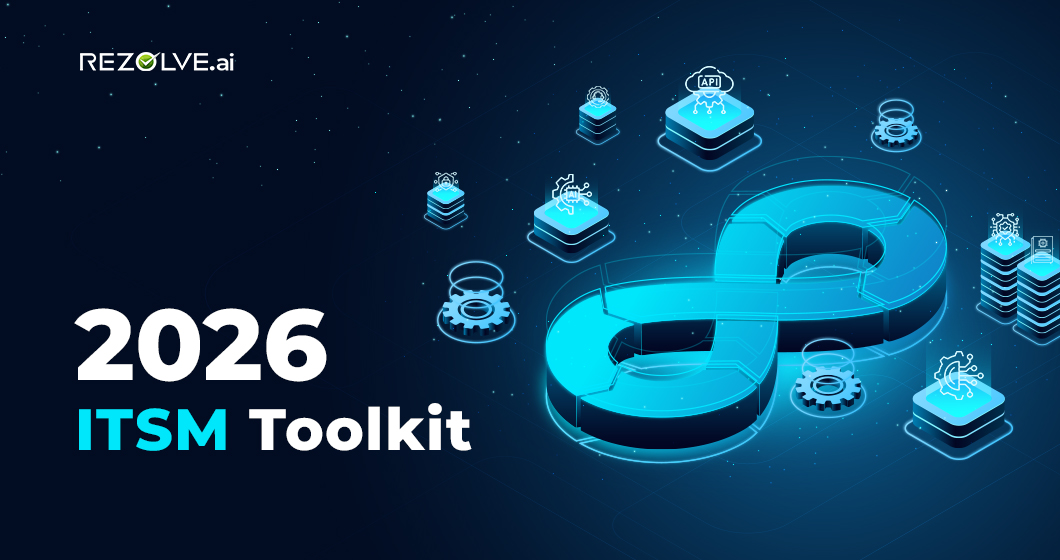Modern enterprises use a wide variety of software. According to Okta’s Businesses at Work Report - large enterprises may deploy over 200-300 applications company wide.
Among these myriads of software, IT Service Management (ITSM) is a core application along with other enterprise pillars like CRM, ERP, Finance/accounting, HRIS, cybersecurity and Collaboration tools, etc. ITSM is important because it provides a structured, strategic approach to delivering and managing IT services, which are essential for modern business operation
On average, an enterprise replaces or upgrades its ITSM application every 5-7 years. For medium sized enterprises (i.e. less than 5000 employees) the frequency of this happening might be as high as every 3-4 years. Typically, ITSM replacement decision has been driven by IT operations leaders, Service Desk Managers, or even infrastructure teams. CIOs weighed in sometimes or were kept in the loop for final approvals and budgets. But CIOs were not necessarily driving these decisions. And there was a good reason for that.
ITSM replacements were done due to cost, functionality, and compliance challenges, i.e. operational rather than strategic concerns. Most products were similar - one better in a specific functionality, but another having an edge in some other functionality. Also, most of these solutions were stand-alone, isolated on-premise products. Even the newer SaaS products were not eco-system players with hardly any connectivity tissue built to other applications via API. Selection criteria written in elaborate RFPs included words like ‘structure’, ‘workflows’, ‘audit trails’, ‘knowledge articles,’ and ‘streamlining.’ If you were a larger enterprise, then there was not much of a decision anyway. You bought ServiceNow. Pricing was largely pegged to the number of technicians, supervisors, approvers, and so on. The more technicians there were, the better it worked out for the ITSM solution vendor. The main negotiation was around issues like cost, support, SLAs, modules etc. ITSM replacements did not offer an opportunity to transform the entire enterprise. But now they do!

Much has changed in the last 2 years since the advent of GenAI and then Agentic AI.
But what is Agentic AI?
Agentic AI refers to AI systems designed to operate as autonomous “agents” that can perceive an environment, reason about a goal, and then execute multi-step actions. The Agentic AI system does this by interacting with external tools or systems to accomplish that goal. Instead of simply making a prediction or classification like traditional AI systems do, an agentic model plans and carries out a sequence of tasks end-to-end.
This is a magnificent capability for enterprise ITSM systems.
GenAI and Agentic AI have unleashed a huge demand for change within enterprises. Here are some examples
- Employees now expect to have instant access to knowledge
- Board/CEO expect Agentic AI transformation to being and start producing results
- Everyone expects ‘intelligence’ in their applications, especially in support related applications
Therefore, the CIOs need to get involved.
Until recently, replacing the ITSM system was seen as a routine upgrade. It was something led by IT operations, driven by performance metrics, compliance issues, or contractual timelines. There was little reason for the CIO to get deeply involved. The impact of switching from one platform to another was rarely transformative. Workflows have changed a little. Dashboards have improved. But the broader organization remained largely unaffected.
At the same time, CIOs are facing new kinds of questions from the C-suite and the board. Leaders are no longer interested in the ITSM system as just another software tool. They want to understand where the AI transformation is happening. If the budget was allocated for GenAI initiatives, they would want to see measurable impact. What percentage of tickets are now being resolved without human involvement? Has employee experience improved? Are there tangible gains in productivity? Such questions arise, and Agentic AI solutions like Rezolve.ai address them with spot-on answers.
The pressure is now on the CIO to lead this change. However, they no longer have to wait for large, multi-year digital transformation programs to demonstrate progress. They can start with areas that touch the most people, solve the most common problems, and deliver measurable impact in just a few weeks. ITSM is one of those areas.
In fact, ITSM might be the most practical entry point for enterprise-wide AI adoption.
Consider a healthcare organization with around 4,000 employees. Suppose their CIO decided to replace the aging ITSM platform with a modern, AI-powered solution like Rezolve.ai within a familiar conversational interface like Microsoft Teams or Slack. Within just 45 days, employees could resolve most IT and HR queries by just talking to the bot in-the-flow of work. They could ask about leave policies, reset passwords, check system access, or get help with procurement. All this without repetitive queries and a clogged ticketing pipeline that drains support agents. The number of tickets handled by human agents dropped significantly (by up to 70%). In fact, typical L1 activities are eliminated completely and satisfaction scores improved across departments.
Such an implementation won’t be just an operational improvement. It will be a wholistic application of enterprise-wide ITSM that ties all the stakeholders together for synchronized efficiency gains. End-users, ticketing agents, and admins can free up their bandwidth for more high quality and productive work.
This is why the ITSM selection process now needs a different lens.
Legacy Systems vs. Conversational Orchestration Layers
While large vendors of legacy systems continue to introduce their own AI features, these are often tied deeply into their own ecosystems. Deploying them across the organization can take time, require significant effort, and may not serve all departments equally. On the other hand, next-generation ITSM platforms, especially those designed around Agentic AI, are modular, interoperable, and ready to be deployed across departments. They work well within conversational interfaces like MS Teams, Slack, and even existing legacy ticketing systems.

You can think of them as modern orchestration layers for the digital workplace. With built-in Agentic AI automation, enterprise search, centralized knowledge base, and 24/7 conversational support capabilities, they can make support feel seamless.
For a given enterprise ITSM system, the important questions that now remain are;
- Does the platform offer intelligent support that feels natural for employees to use?
- Can it tap into existing knowledge repositories without requiring heavy rework?
- Does it integrate smoothly with core collaboration tools?
- Is it modular enough to scale across departments?
- Can it start delivering value quickly? Ideally within the first 60 to 90 days?
From a strategic perspective, the above questions about enterprise ITSM means a CIO can;
- Improve employee experience in a visible, quantifiable way
- Reduce ticket volumes and support costs
- Meet board-level AI adoption expectations
- Enable AI-powered support across multiple departments
- Establish a scalable foundation for further automation initiatives
And all of this can begin with a decision that was previously considered operational.
That’s the real opportunity.
Many organizations are already in the middle of a refresh cycle. The existing ITSM contract is ending. New tools are being evaluated. Budgets have been tentatively approved. If the process is treated as routine, a new vendor will be chosen, migration will happen, and the organization will be locked into another five-year cycle possibly with little upside.
This is why CIO involvement is critical in enterprise ITSM transformation.
If they pay close attention, evaluate platforms with a broader lens, and make a decision that aligns with long-term enterprise goals, upgrading the ITSM system can deliver impact far beyond just the service desk. It can signal that AI is no longer a concept being explored but a capability being actively implemented by companies for measurable positive outcomes – with CIOs being the flag-bearers of that change.
Ready to make the strategic ITSM upshift? See how Rezolve.ai can help you – Book a Demo





.webp)




.jpg)

.png)








.png)